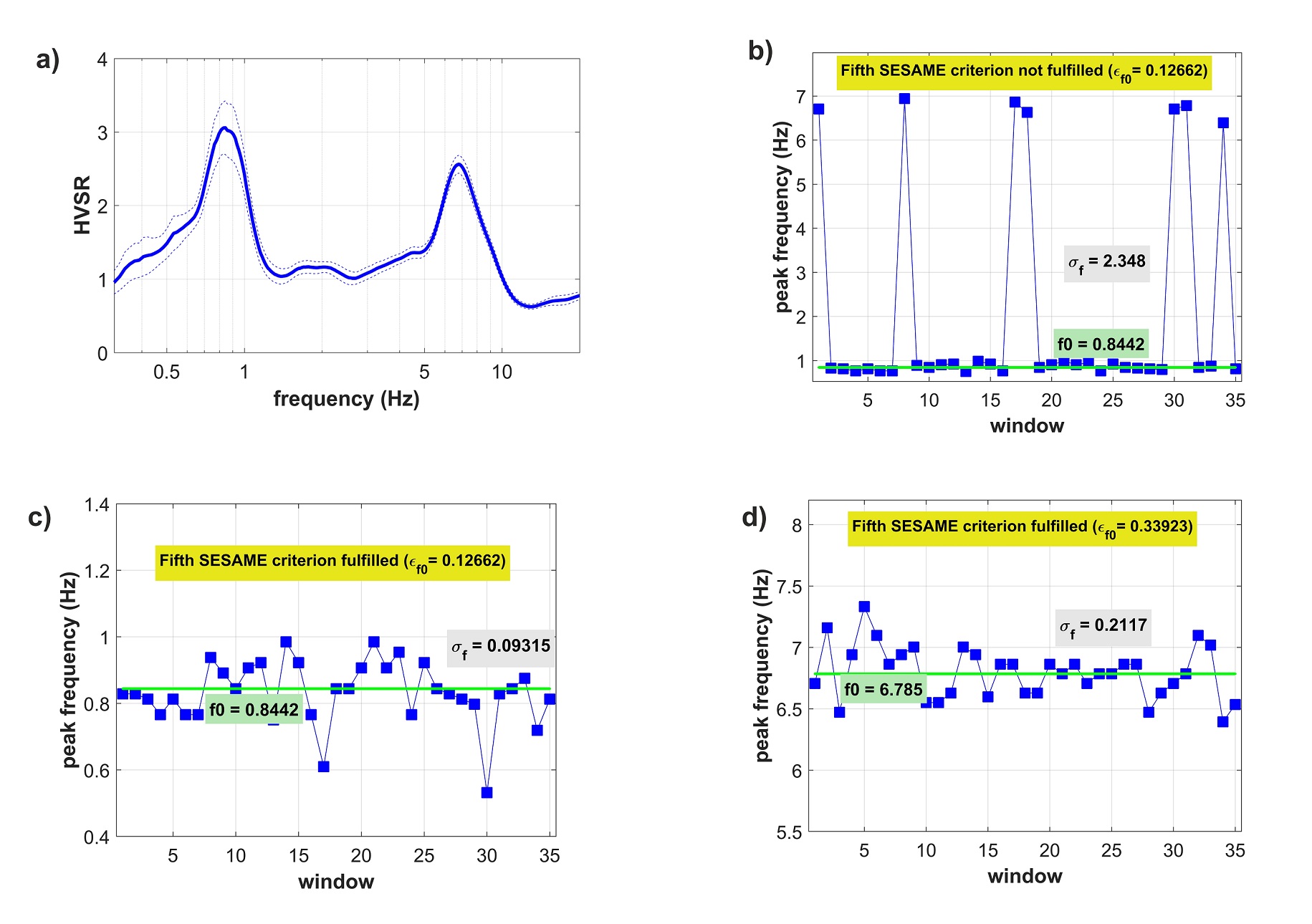New article ''Multiple-peak HVSR curves: Management and statistical assessment''
Multiple-peak HVSR curves: Management and statistical assessment
Dal Moro G., Panza G.F., 2021, Engineering Geology
https://doi.org/10.1016/j.enggeo.2021.106500
Are microtremor data efficiently cleaned?
Are the HVSR peaks properly assessed?
Do microzonation f0 maps make sense?
Abstract
The Horizontal-to-Vertical Spectral Ratio (HVSR) obtained from microtremor data recorded at three test sites are analyzed in order to highlight some issues related to the computation of the SESAME criteria that define the statistical robustness of possible peaks. In case of multiple-peak HVSR curves, it is shown that to properly assess the statistical properties of a peak and avoid the problem of multimodal data distribution, it is crucial to isolate each peak by reducing the frequency range around it.
It is also shown that, while the standard approach used to obtain a homogeneous data set is represented by the removal of large-amplitude transient events before the computation of the HVSR, the removal of outlier HVSR curves can be a more effective way to obtain such a goal, being outlier HVSR curves not necessarily associated to large-amplitude transient events. It is eventually briefly discussed the problem of the proper management of multi-peak HVSR curves in microzonation studies while defining the so-called soil frequency maps. It is argued that to focus these maps just on the lowest-frequency (f0) value is questionable because higher-frequency peaks can be much more important when the local urban landscape is characterized by low-rise buildings.
- NEWS ARCHIVE
- share:











